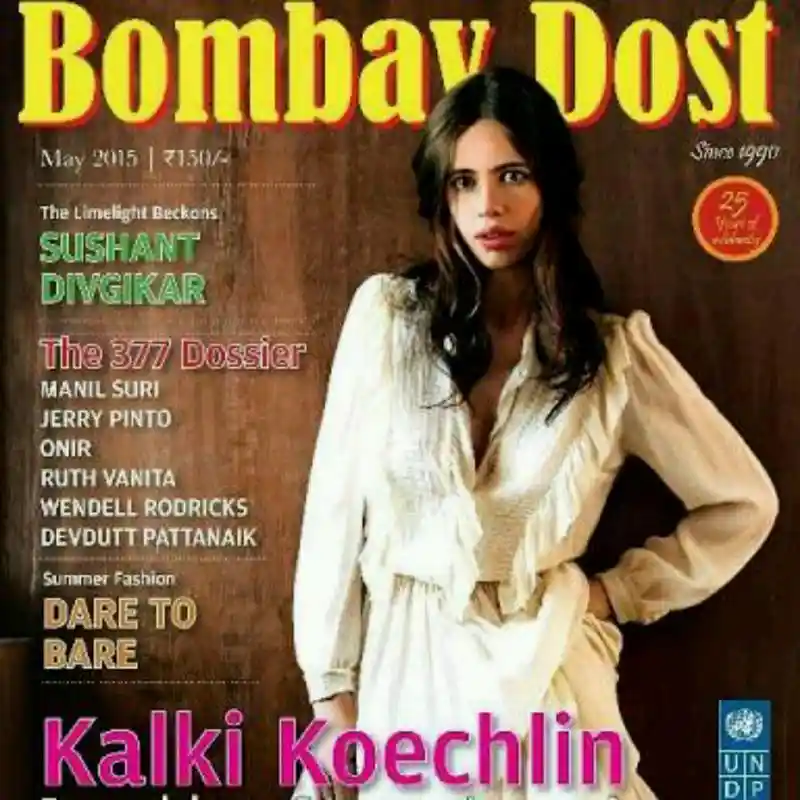Bombay Dost: Leaving the Closet Behind
Representation matters. Seeing relatable characters onscreen fills us with excitement, doesn't it? A similar phenomenon occurred in the 1990s when a journalist, driven by a desire to make a difference, conceived the idea of a magazine exclusively dedicated to the cause of gay men. They were the allies of a community confined within its shell. Today, the magazine also caters to other members of the LGBTQ+ community, such as lesbians and transgender individuals, and is slowly expanding its reach to a heterosexual audience. This is the Bombay Dost magazine.

Ashok Row Kavi, the man behind the mission; Source: The Indian Express
From a young age, Indians are exposed to heteronormative media. Homosexuality, or same-sex attraction, is not a new concept. Unfortunately, homonegativity, or the hatred of the LGBTQ+ community, persists in Indian society due to the influence of Western politico-cultural interactions. Section 377 of the Indian Penal Code, which criminalized same-sex relationships as “unnatural offences,” was instituted by the British Raj in 1862. However, in 2018, a five-judge bench unanimously dismissed Section 377.
Being a member of this marginalized community for over 150 years, criminalized and stigmatized, must have been daunting. It was only natural that the first registered magazine solely dedicated to the LGBTQ+ community, which was first published in 1990, would stir emotions among the Indian populace. This year, the magazine celebrates its 33rd anniversary.
Ashok Row Kavi, a journalist and the man behind Bombay Dost, attended an International AIDS Conference in Amsterdam and served as the chairman of the Second International Congress on AIDS. This became the starting point of Bombay Dost because, as a fellow member of the community, Kavi wanted to initiate conversations about the pressing issues faced by gay individuals in their daily lives, particularly concerning sexually transmitted diseases like AIDS. In a brave act, Kavi voiced the anguishes of a community that had to live in perpetual fear and secrecy. Another founding member, Suhail Abbasi, remarked that another motive was to create something concrete and structured to represent and mobilise the community.
Bombay Dost,true to its tagline “bolder than ever,” has lived up to its reputation. It began as a cautious sixteen-page pamphlet, providing guidance to gay men on managing their lifestyles, gaining self-confidence, and overcoming insecurities and self-image issues associated with sexual orientation. Initially published in both English and Hindi, the magazine featured various columns with quirky names like Khush Khat or Happy Letters, which allowed readers to exchange correspondence and arrange meetings. The early issues of Bombay Dost included “tear-me-out condom questionnaires”. Like any other magazine, it had a gossip column titled Poison Pudi, which featured a self-styled gossip diva with an inside track on the city’s gay scene. Additionally, it had its own agony aunt section called Papa Passion, where readers’ questions were answered in a creative and humorous style. Sridhar Rangayan, one of the early editors of Bombay Dost, humorously described the magazine as “Cupid in many ways, and a courier boy”.

The magazine's 2015 issue; Source: Mid-day
The distribution of this taboo magazine was clandestine and challenging. The subject matter was considered blasphemous, and openly displaying it was likely to invite criticism and outrage. The magazine was exchanged in secret through visits to seedy book stalls and deserted alleyways.
Some vendors in the city stocked the magazine and hid it among other titles, only producing Bombay Dost when buyers explicitly sought it. “The vendor would disappear and then come back with a brown paper envelope,” Rangayan says. “Then the buyer would put it in his bag and run. It is comical now, but it was anxiety-inducing then. A single magazine might have gone through 100 pairs of hands." They were traded between people or left on canteen tables and office floors, according to Kavi.
Bombay Dost was a ray of hope for closeted gay men in the 1990s, long before the age of the internet. The earliest editions were often sold at premium rates of 15 rupees by dealers. The magazine also encouraged queer artists like Bhupen Khakar to design the cover of the 1996 issue. In 2002, it went on a hiatus due to funding and volunteer shortages, but it was eventually revived in 2009 at Oxford Bookstore Churchgate. Bollywood actor Celina Jaitley was present with Prince Manvendra Singh Gohil during the relaunch of Bombay Dost. It was during its second phase that the magazine began to undergo certain changes. The publication was now restricted to English and, unlike earlier times, the magazine gained better acceptance from the public. Its journey from brown envelopes to proud display in bookstores had been arduous but fulfilling. In the age of digital versions, Bombay Dost magazine retained its print tradition to ensure it did not exclude Indians who do not have digital access.
An offshoot of Bombay Dost was Humsafar Trust, created by the same founders. This NGO now collaborates with the Government of India and aims to provide healthcare and support services, spread awareness about diseases, and fight for the human rights and social welfare of the LGBTQ+ community. It focuses on mental health, often providing one-on-one counselling sessions. The trust works tirelessly to dismantle stereotypes against the community and create a better and more accepting living environment for all.
The significance of a magazine for queer people can be understood by the popularity itgained within a few years of its first publication. It received letters from all over the world, including Tajikistan, Afghanistan, Dubai, Iran, Pakistan, and the Central Asian Republic, among others. In Bombay Dost, the silenced queer community found a voice and the support that had been denied to them in a world dominated by heterosexual norms, culture, and politics. While it was not the first attempt to voice queer people's thoughts, it is remembered today as the most successful in doing so.


